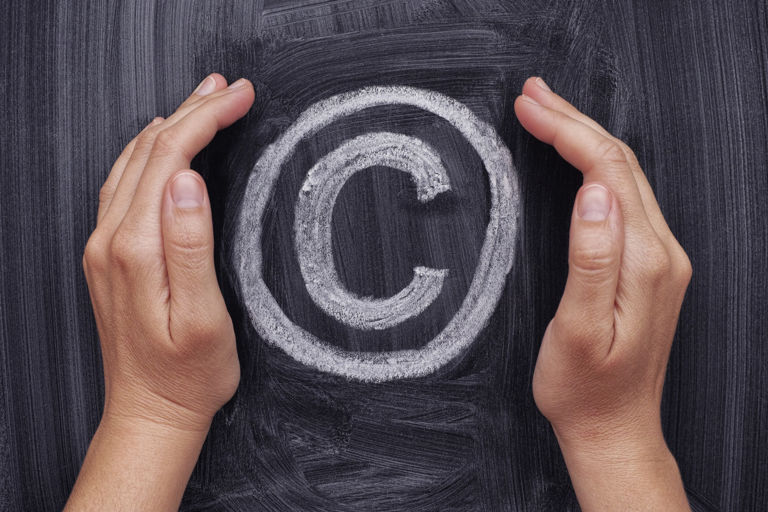Five common misconceptions about protecting your brand online

Posted: Mon 5th Jun 2023
Figuring out how to protect your brand online can be a daunting task. A quick Google will return hundreds of webpages all promising need to know information on intellectual property (IP) and keeping your brand safe.
Intellectual property is something unique that you physically create. And having the right type of intellectual property helps others from stealing it. You can protect your name, designs, function and even smells.
To make your lives a little simpler, here are the top five misconceptions about online brand protection.
Misconception 1: IP protection is only for big brands
It is not just big brands that get copied or counterfeited. For every fake Gucci handbag or counterfeit Adidas football shirt being sold online, there are smaller brands' innovative products or registered trademarks being copied and infringed on the exact same marketplaces.
For this reason, small and newly fledged businesses equally benefit from proactively registering comprehensive IP and establishing a targeted protection strategy online. By ascertaining which IP you need in the early stages of your brand, you help to prevent counterfeiters taking advantage further down the line.
Misconception 2: IP protection is too expensive
A trademark in the UK costs as little as £200 and can be extended to the EU for €850.
Investing early in the appropriate IP, and where necessary, online monitoring and protection, can prevent the potentially significant loss of sales you and your company will face if counterfeited. It is also important to know that the EU funds IP helpdesks can provide free, expert and confidential advice.
Costs are also saved by doing your homework. It is vital to know in which classes you need to register your IP.
You should consider what your trademarks or designs are being used for now and what you may wish to use them for in the future. Failing to register in the appropriate class can cost you extra to re-register correctly or worse leave your products and brands unprotected.
Simultaneously, there is little to be gained from spending large sums on IP registration in territories where you have no intention of trading or producing. If a counterfeit listing, on an online marketplace, offers delivery to a region where you have registered IP it is infringing and can be removed, irrespective of the seller's location.
Registering IP and engaging online protection brings costs but, if aptly carried out, these costs are nowhere near those incurred by doing nothing.
Misconception 3: Registering IP is enough
While establishing and owning a thorough IP portfolio is great, you need to ensure that you use your property to defend your brand or products.
Unused trademarks, copyrights and design rights are at risk of being claimed by other companies. So, make sure that you know and understand what IP you own and in what territories it can be enforced. Secondly ensure that you don't stand by if you are copied or counterfeited.
Understanding your IP rights and standing up to copycats is the only way to effectively remove fake products from online platforms and to ensure your innovative ideas, registered and unregistered designs and trademarks remain yours!
Misconception 4: Lawyers are always required
When it comes to defending your brand against counterfeiters there are many steps that you can take that don't involve an IP lawyer. By ensuring that you understand the extent of your IP portfolio, you can use it to fight back against fakes that begin to crop up using the marketplaces infringement reporting sites.
While this can be a tedious task, many of the major platforms allow you to register your brand and IP with them, streamlining the process of taking down infringing copycats. Remember, if you do find it overwhelming there are protection companies that can help, leaving you to focus on other vital aspects of your business.
Nevertheless, in the early stages of establishing your IP portfolio expert legal advice and the use of an IP lawyer is invaluable. They will help to ensure that documents are worded correctly, and that IP is registered in the appropriate classes. This allows you to save costs on avoidable legal expenditure in the future.
Misconception 5: Fighting fakes is a never-ending uphill struggle
It can seem like fighting fakes online is an endless battle that you can't win. This is not the case.
It is unlikely that you will be able to catch every infringement across the vast internet landscape of e-commerce marketplaces, independent websites and social media platforms. However, this complete eradication is a target that is neither necessary nor cost effective.
If you are consistent and targeted in your brand's defence, the extent of the task you face will continue to shrink. Monitoring whole sites across different domains can appear laborious but, increasingly, technology can be employed to sweep these platforms in a fraction of the time. Most major online marketplaces now blacklist sellers that are repeatedly reported, preventing them from selling on that platform.
Equally, if you find a counterfeit on the 50th page of an online search it is perhaps not as worth your time than a focused campaign protecting the most seen listings and sites. In short, the fight against fakes becomes less daunting once you have a strategy in place.
Simply trying to rid the internet of all copycat listings is impossible and will not allow you to measure the effectivity of your action. Instead you can level the playing field by registering the correct IP and focusing your efforts on the sites that your customers are most likely to encounter.
This was just a brief overview of some of the facts circling the internet that are easily believed without all the facts. The world of online brand protection is not a simple one, and you would be forgiven if it was one that you'd rather not think about. However, it is incredibly important and is a vital part of protecting your revenue, your reputation and your customers.
Relevant resources
Get business support right to your inbox
Subscribe to our newsletter to receive business tips, learn about new funding programmes, join upcoming events, take e-learning courses, and more.
Start your business journey today
Take the first step to successfully starting and growing your business.
Join for free
